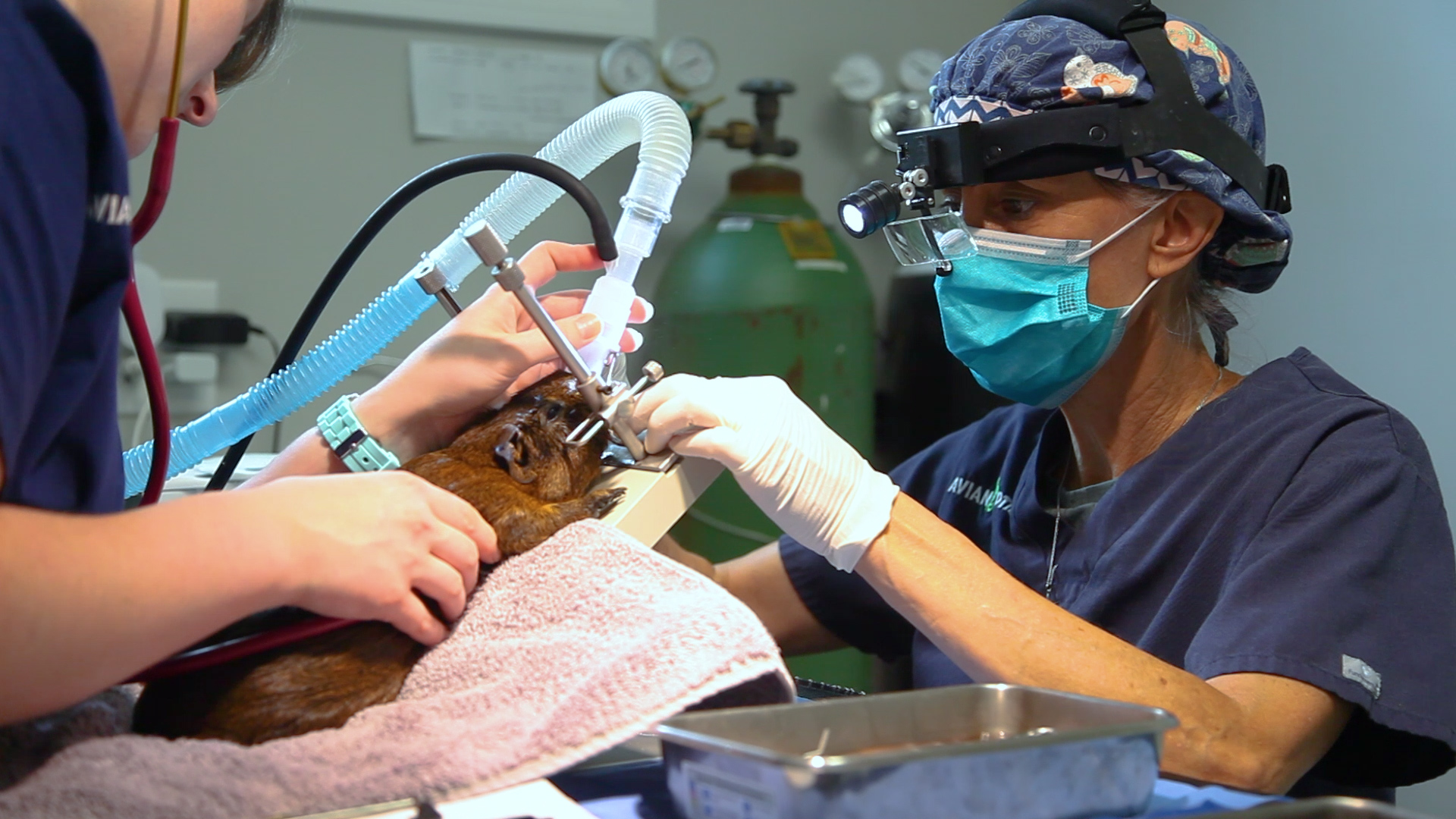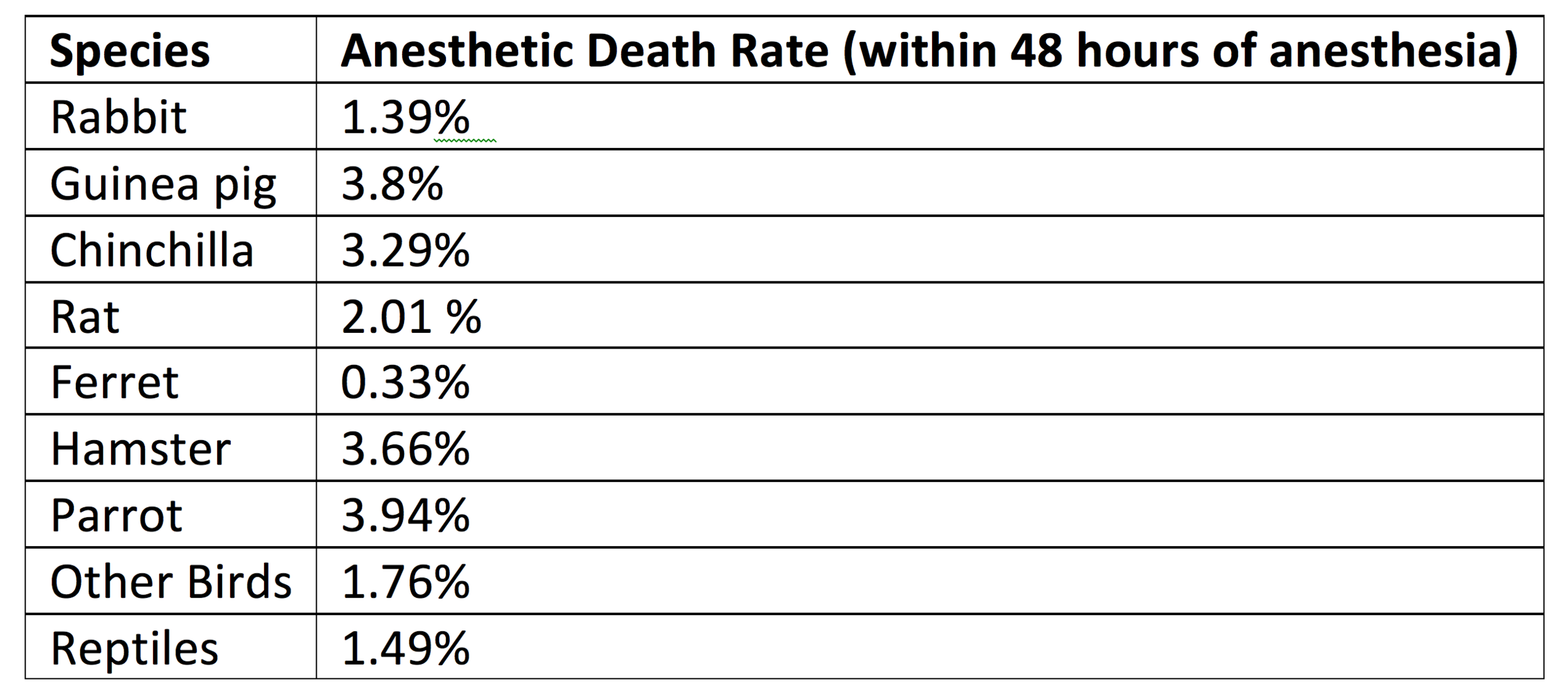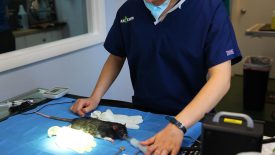 This is a subject that’s tough to write about, but from time to time it deserves some attention, and that is risk of anesthetic death in our exotic patients.
Anesthesia for humans, traditional pets and exotic pets has come a long way in the last 20 years. There have been huge advancements in exotic pet anesthesia even in the last 5 years, with safer drugs, and better monitoring and support techniques.
This is a subject that’s tough to write about, but from time to time it deserves some attention, and that is risk of anesthetic death in our exotic patients.
Anesthesia for humans, traditional pets and exotic pets has come a long way in the last 20 years. There have been huge advancements in exotic pet anesthesia even in the last 5 years, with safer drugs, and better monitoring and support techniques.
Even so, every anesthetic event invites risk for injury or even death. In all cases, the risk of anesthesia must be weighed against the disadvantages of not performing a needed procedure.
An example is anesthesia for spaying our pet rabbits. Risk of uterine cancer from not spaying rabbits is high, in some studies and rabbit breeds as much as 70 %. The risks of not repairing certain types of fractures is a lifetime of disability and potential discomfort.
But what is the actual calculated anesthetic risk? This is hard to know, as things that impact anesthetic risk include the condition of the patient, drugs selected, skills of the anesthetic monitoring team experience of the surgeon and ability to complete the procedure safely and as quickly as possible.
 One 2006 study in the UK compared general anesthetic risk for dogs, cats and some exotic species, including rabbits and some birds. The entire document is over 250 pages, so we will summarize here: the overall anesthetic death rate in this study for rabbits (healthy and well) was 1.39%, meaning out of 100 procedures, less than 2 rabbits died during or within 48 hours of anesthesia. It should be noted that when death rates were examined for healthy rabbits alone, the death rate was less than 1%. The rate for guinea pigs was a bit higher than for rabbits, at 3.8%, and ferrets lower at 0.33%. More data for exotic pets is included here:
One 2006 study in the UK compared general anesthetic risk for dogs, cats and some exotic species, including rabbits and some birds. The entire document is over 250 pages, so we will summarize here: the overall anesthetic death rate in this study for rabbits (healthy and well) was 1.39%, meaning out of 100 procedures, less than 2 rabbits died during or within 48 hours of anesthesia. It should be noted that when death rates were examined for healthy rabbits alone, the death rate was less than 1%. The rate for guinea pigs was a bit higher than for rabbits, at 3.8%, and ferrets lower at 0.33%. More data for exotic pets is included here:
Anesthetic death rates calculated within 48 hours of anesthesia. Brodbelt D. The confidential enquiry into perioperative small animal fatalities. Thesis. Royal Veterinary College of London, 2006.
While these rates are relatively low, they are even lower in dogs and cats, and much lower in humans, meaning exotic medicine has much opportunity for improvement. In our 30 years of practice we’ve seen some amazing new techniques and accomplished surgeries we previously would not have thought possible. We look forward to many more great advancements in the years to come.



